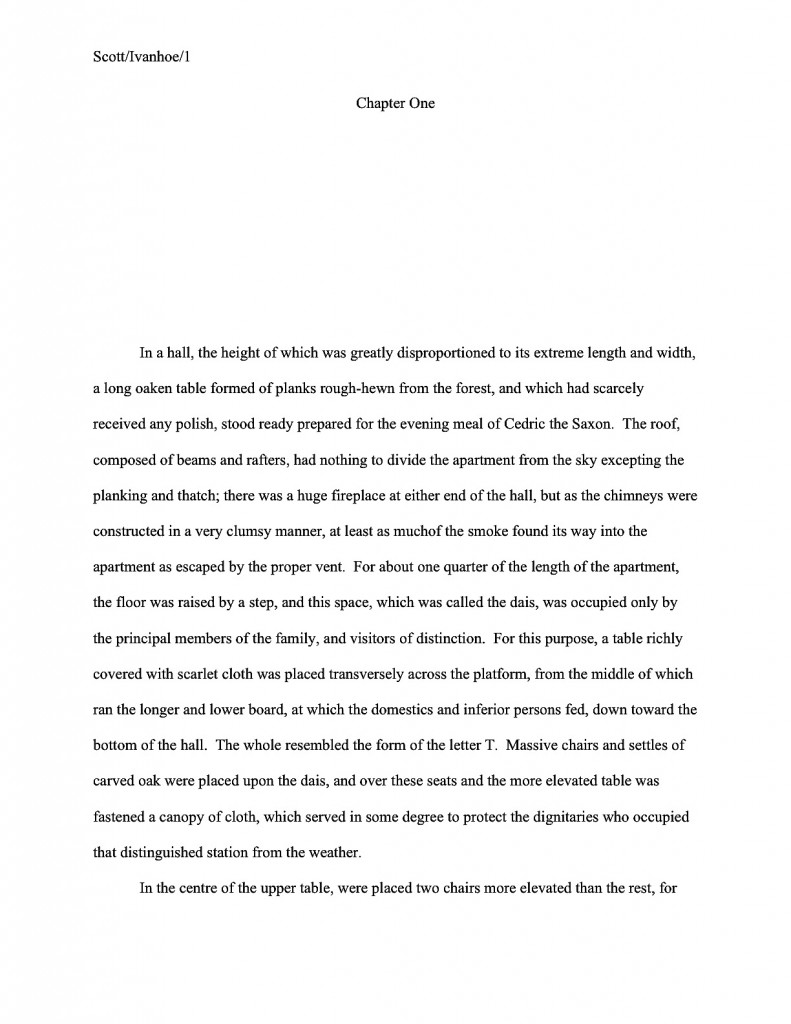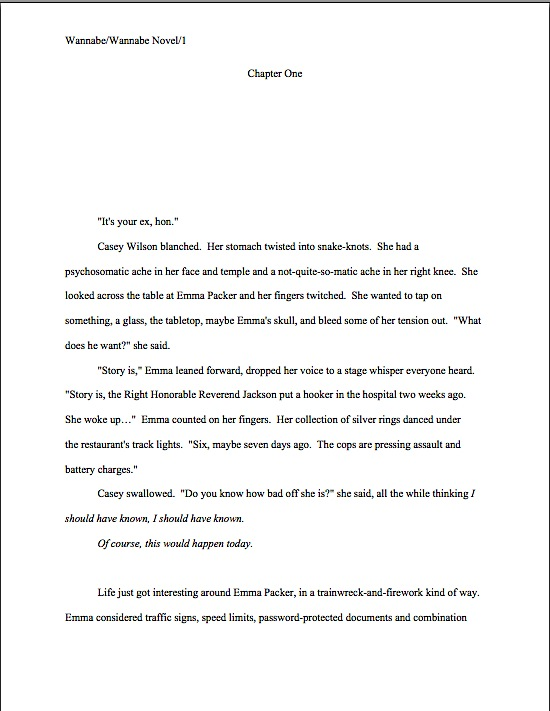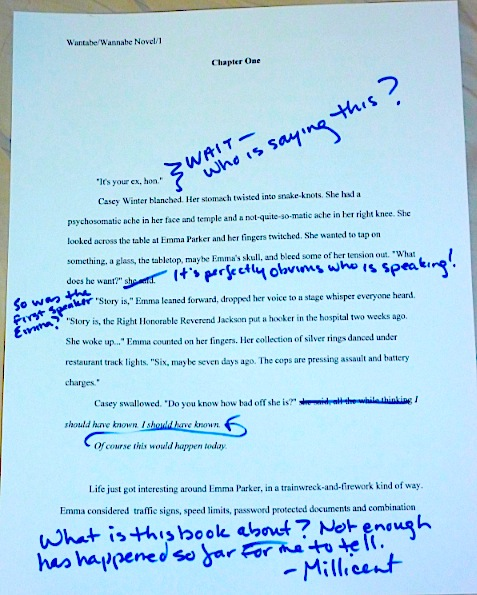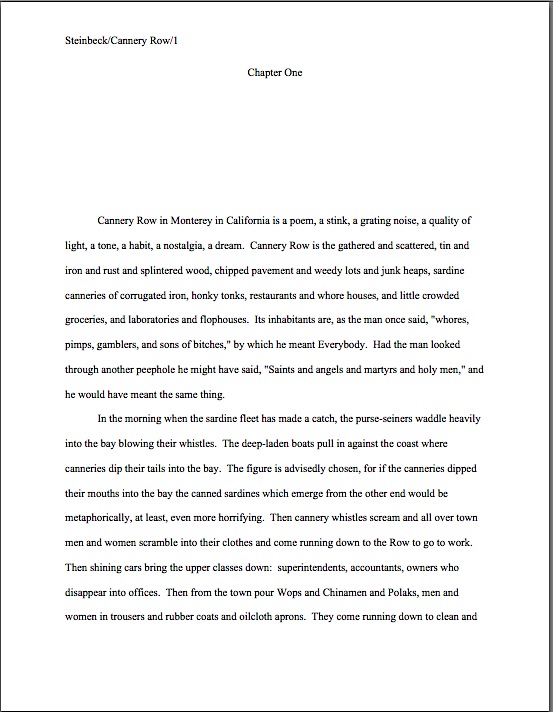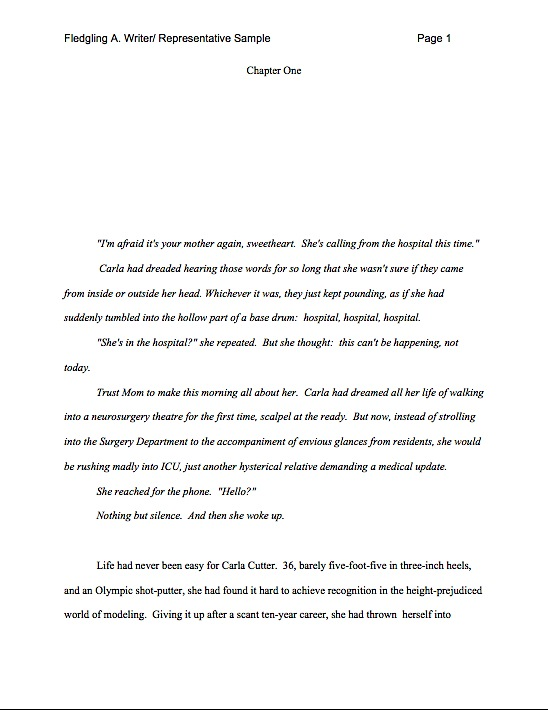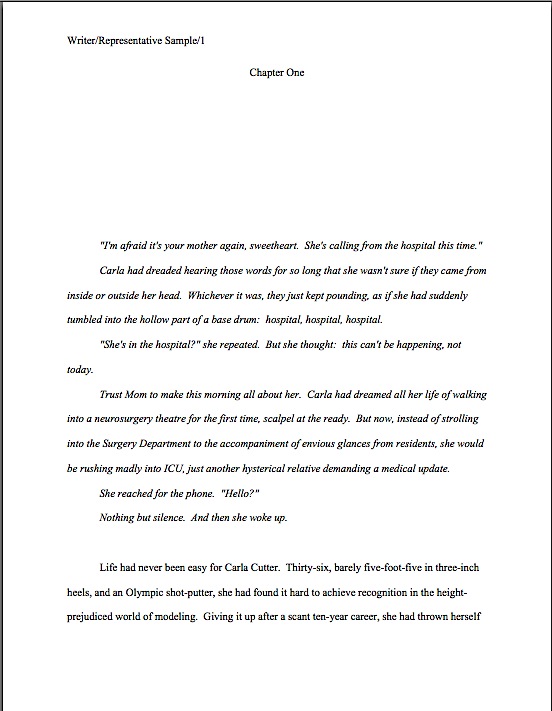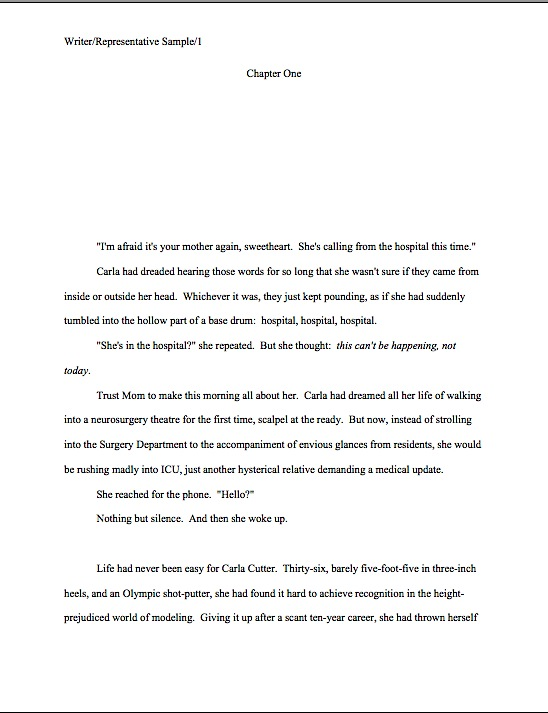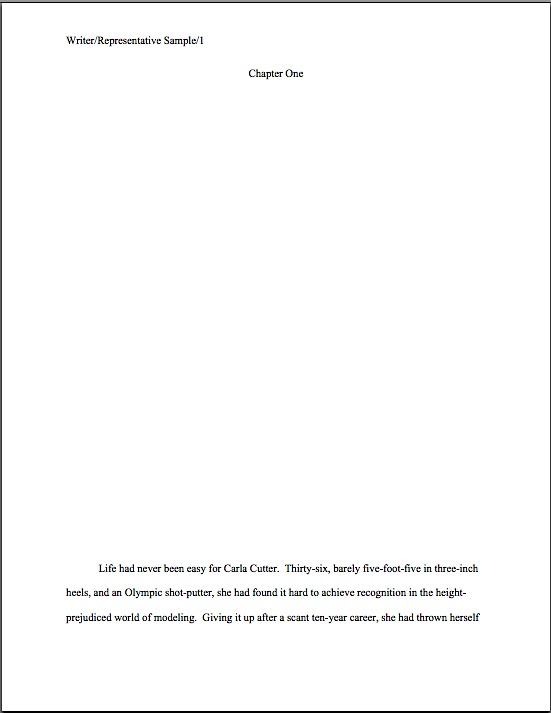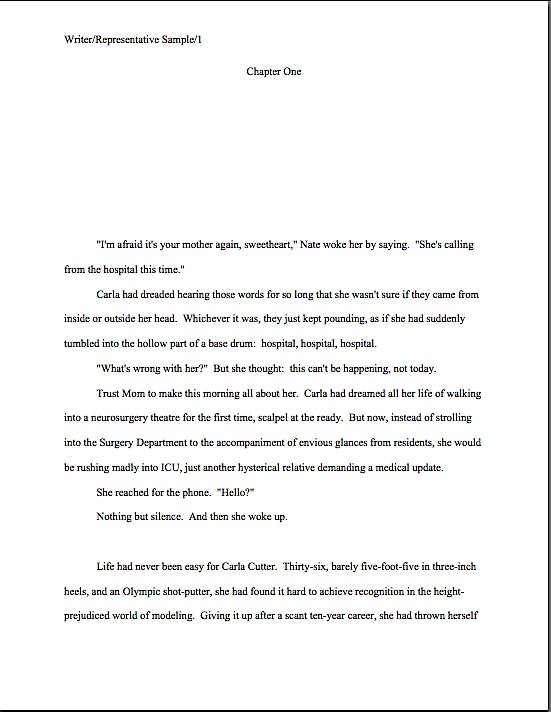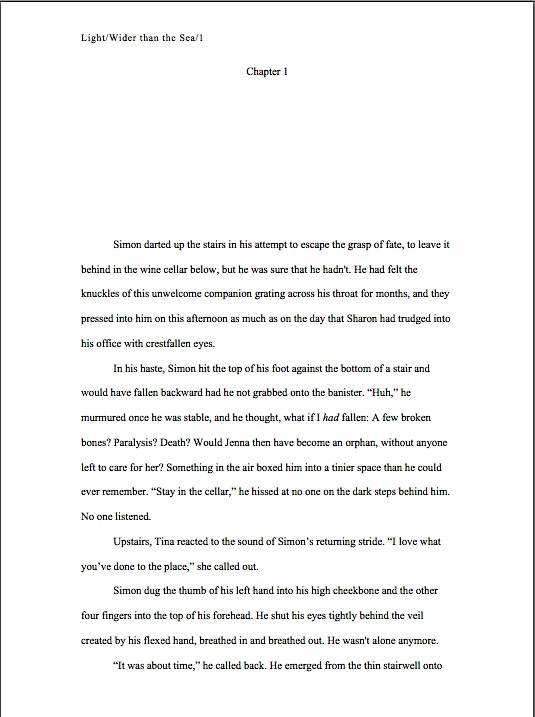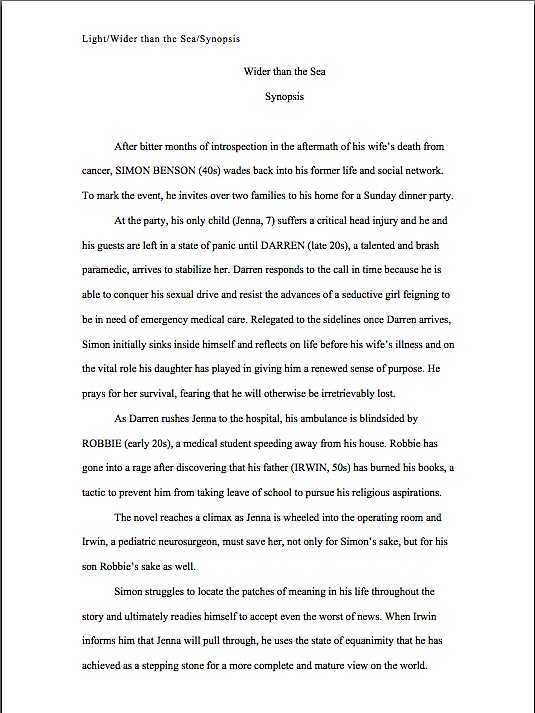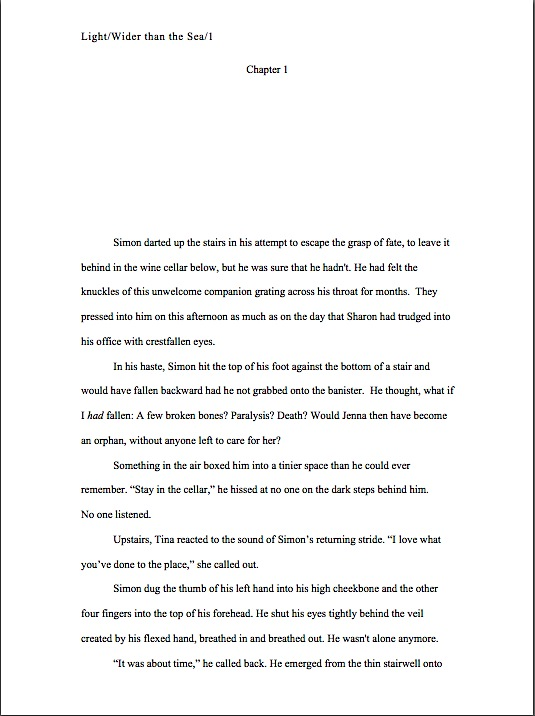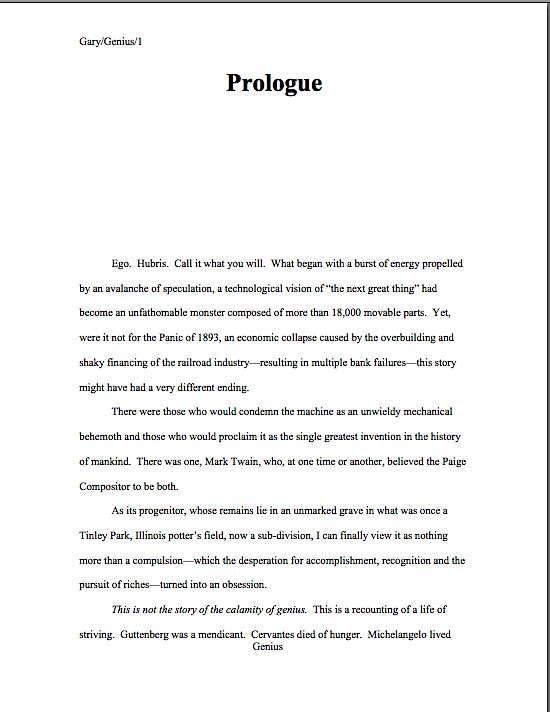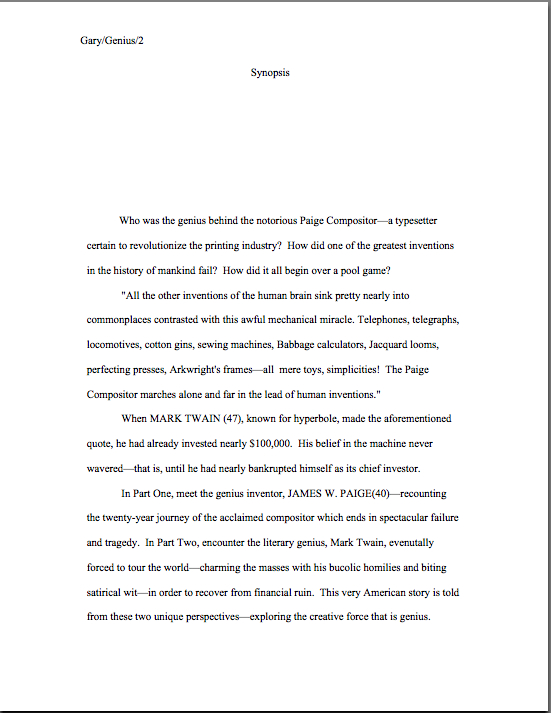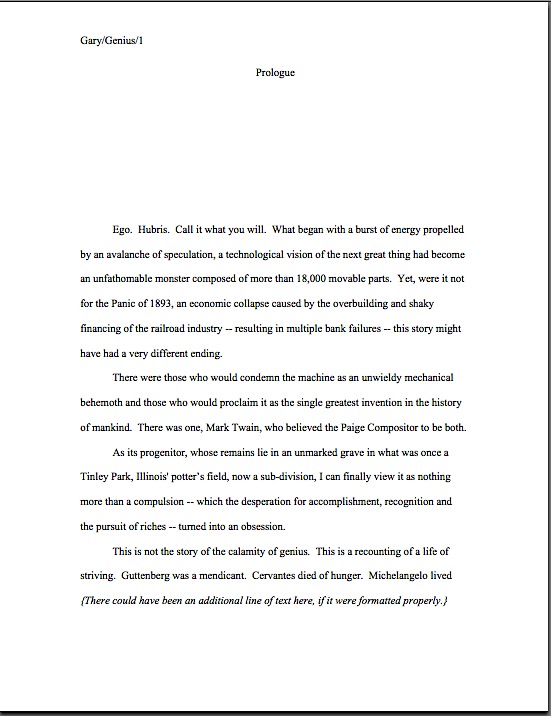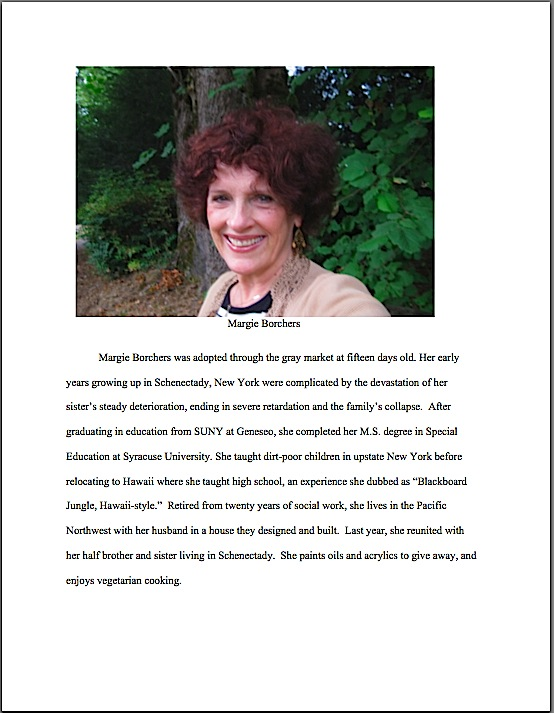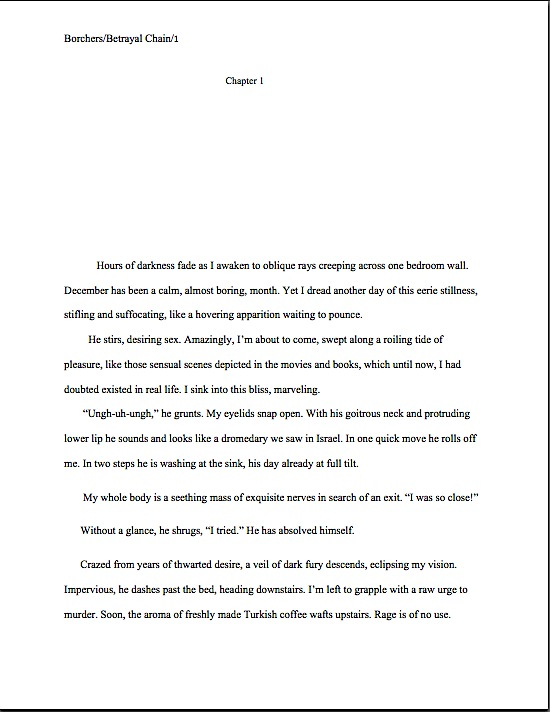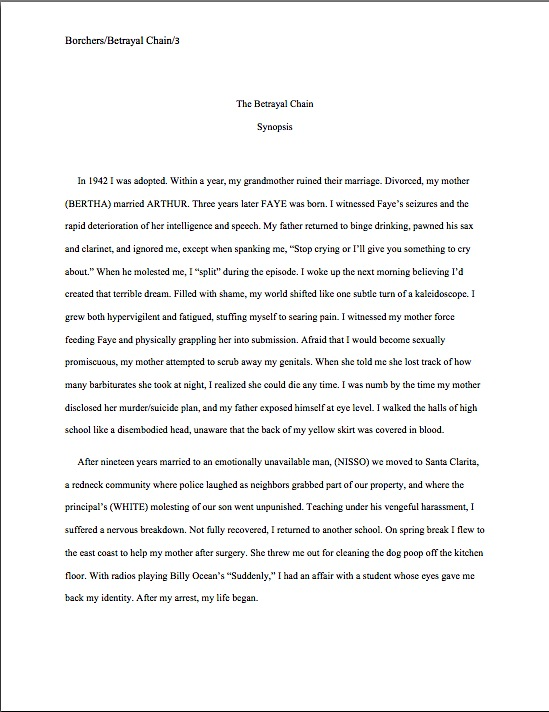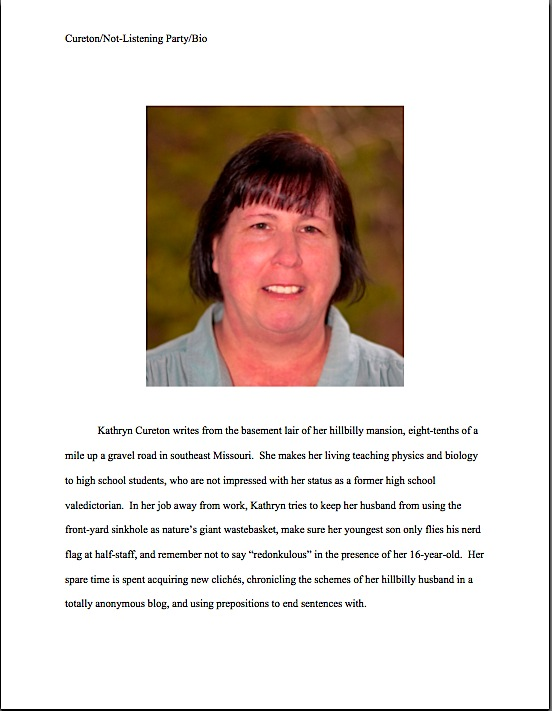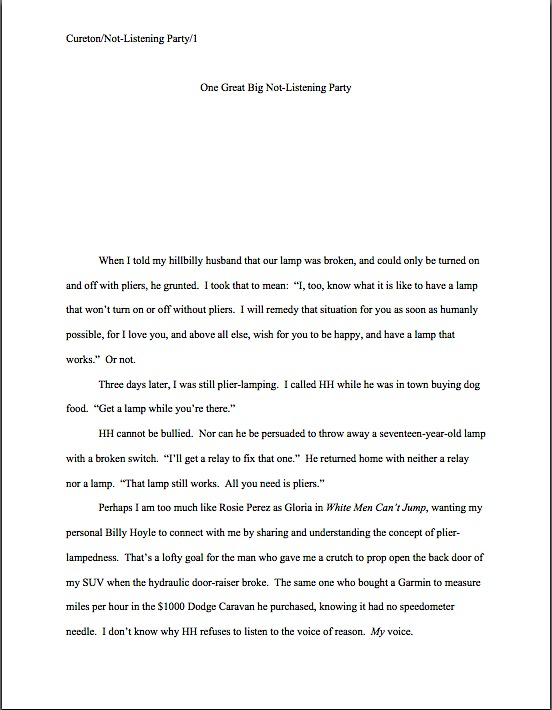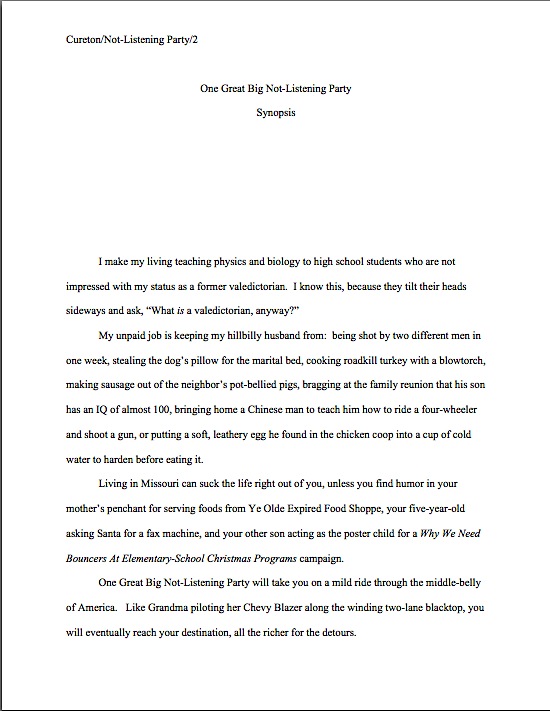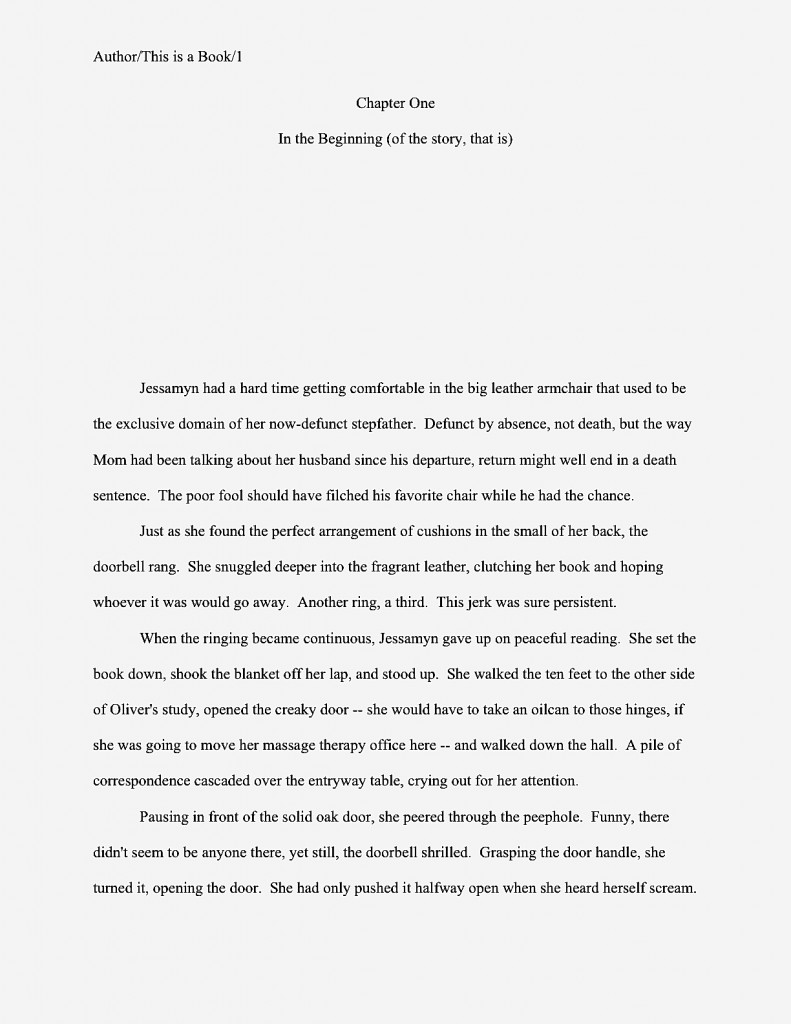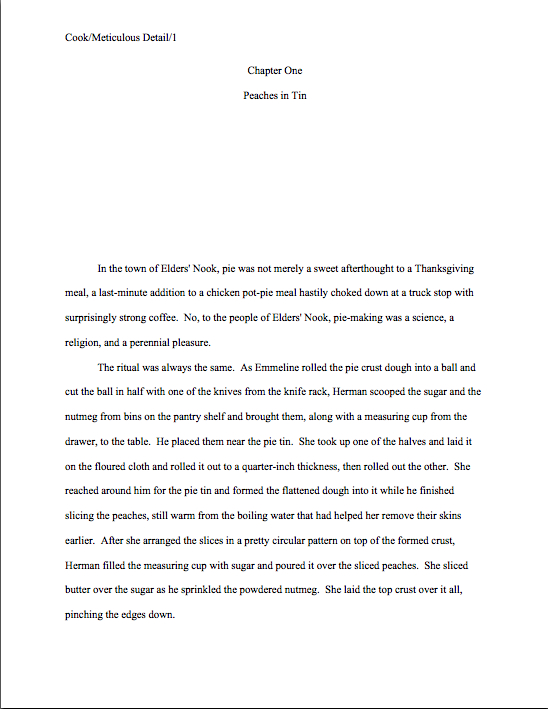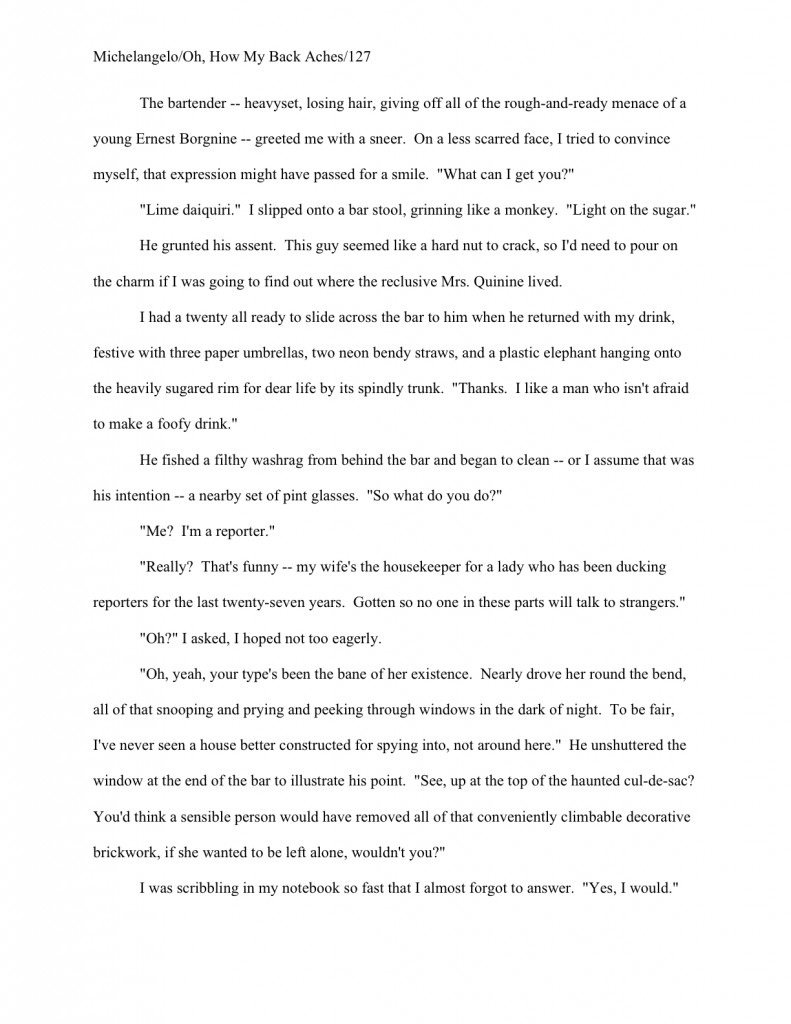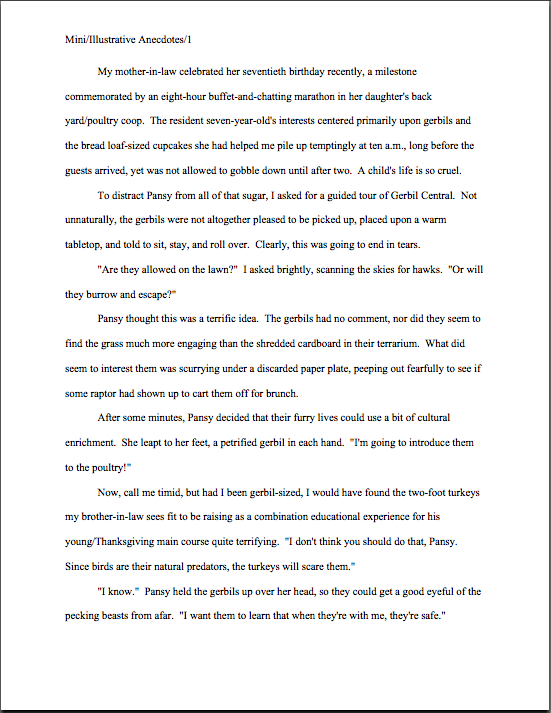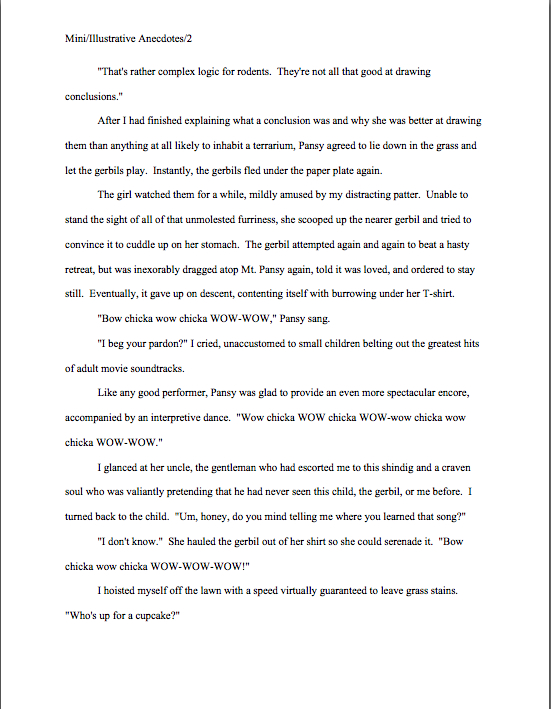Throughout our rather sprawling Pet Peeves on Parade series, I have been chattering blithely about narrative conflict and tension, as though every aspiring writer out there were already hard at work, trying to ratchet up the quotas of both in their manuscripts. As, indeed, those of us who read for a living so frequently advise: make sure there is conflict on every single page is, after all, one of the most commonly-given pieces of how-to-please-the-agent-of-your-dreams revision advice.
But if you’ll pardon my asking, what does it mean?
Seriously, how would a conscientious self-editor apply this advice to the manuscript page? Insert a sword fight every eight paragraphs or so? Have the nearest gas station should spring a leak just because the protagonist happens to be strolling by? Force the lovers in your romance cease stop billing and cooing in favor of snarling at one another?
Of course not — but you would be surprised how often aspiring writers stumble into the harsh daylight at the end of a writers’ conference muttering to themselves, “Must ramp up conflict. Tension on every page!” without being certain what that means on a practical level. There’s a pretty good reason for that: colloquially, conflict and tension are often used interchangeably, but amongst professional writers and those who edit them, they mean two different but interrelated things.
So let’s take a moment to define our literary terms, shall we?
Narrative conflict is when a character (usually the protagonist, but not always) is prevented from meeting his or her goal (either a momentary one or the ultimate conclusion of the plot) by some antagonistic force. The thwarting influence may be external to the character experiencing it (as when the villain punches our hero in the nose for asking too many pesky questions), emerge from within her psyche (as when our heroine wants to jump onto the stage at the county fair and declare that the goat-judging was rigged, but can’t overcome that fear of public speaking that she has had since that first traumatic operatic recital at the age of 10), or even be subconscious (as when our hero and heroine meet each other quite accidentally during the liquor store hold-up, feeling mysteriously drawn to each other but not yet realizing that they were twins separated at birth).
Narrative tension, on the other hand, is when the pacing, plot, and characterization at any given point of the book are tight enough that the reader remains engaged in what is going on — and wondering what is going to happen next — rather than, say, idly wondering whether it is time to check in again with a 24-hour news network. A scene or page may be interesting without maintaining tension, and a predictable storyline may never create any tension at all.
Or, to put it so simply that a sophisticated reader would howl in protest, conflict is character-based, whereas tension typically relates to plot.
Because conflict and tension are related, a manuscript that suffers from a lack of one often suffers from a paucity of the other as well. First-time novelists and memoirists are particularly prone to falling prey to both, enough so that the professional readers’ stereotype of a first submission is — are you sitting down? — a story that meanders episodically from event to unrelated event, just like real life.
“And just like real life,” our old pal, Millicent the agency screener, has been known to murmur over manuscripts, “any randomly-chosen scene will not appear to a bystander to be going anywhere in particular. Is there a point to all of this slice-of-life activity?”
Why might first books be more likely to fall prey to this pervasive problem than others? Keeping both conflict and tension high for an entire manuscript is darned difficult; it’s a learned skill, and many quite talented writers have been known to write a practice book or two before they learn it.
Oh, should I have checked again that you were sitting down before I broached that one?
The other major reason first books tend to drag is that writers new to the biz are far less likely to sit down and read their manuscripts front to back before submitting them than those who’ve been hanging around the industry longer. Long enough, say, to have heard the old saw about a novel or memoir’s needing to have conflict on every page, or the one about the desirability of keeping the tension consistently high in the first fifty pages, to keep Millicent turning those submission pages.
Yet another reason that I keep yammering at all of you to — sing along with me now, long-time readers — read your manuscript IN ITS ENTIRETY, IN HARD COPY, and OUT LOUD before submitting it. Lack of conflict and tension become far, far more apparent when a manuscript is read this way.
Actually, pretty much every manuscript mega-problem is more likely to leap off the page at the reviser reading this way, rather then the more common piecemeal scene-by-scene or on-the-screen approaches. This is particularly true when a writer is revising on a deadline — or has just received a request for pages from a real, live agent.
Which is, of course, precisely when it’s most tempting not to give your work a thorough read-through. Especially in the second case: if you’re like the overwhelming majority of aspiring writers, you’ll be so excited by a positive response to your query that you’ll want to pop those pages in the mail or hit the SEND button within 24 hours or so. You know, before that nice agent changes his mind.
If you read that last paragraph and cried, “By gum, that’s me!” relax. Requests for pages don’t expire for a year or so, typically. Even if the request came as the result of a successful pitch — and if so, kudos on your bravery — an aspiring writer does not, contrary to popular panicked opinion, need to get the requested materials onto the agent’s desk before s/he forgets the pitch. If one pitched at a reasonably busy conference, it’s safe to assume that s/he will forget your pitch — but that s/he will have taken good notes.
Translation: you have time to proofread before sending all or part of your manuscript. In fact, it’s only professional to take the time to do so.
Unfortunately, those whose writing would most benefit from a good, hard, critical reading tend to be those less likely to perform it. While many aspiring writers develop strong enough self-editing skills to rid their entries of micro-problems — grammatical errors, clarity snafus, and other gaffes on the sentence and paragraph level — when they’re skidding toward a deadline, they often do not make time to catch the mega-problems.
So let’s all chant the mantra together again for good measure: before you submit so much as a paragraph of your writing to a professional reader, it would behoove you to read it IN ITS ENTIRETY, IN HARD COPY, and OUT LOUD.
I know, I know: it has too many syllables to be a proper mantra. Chant it anyway, so it doesn’t slip your mind the night before that contest deadline.
Many a hand has been in the air for many a paragraph now, hasn’t it? “But Anne,” anguished middle-of-the-night manuscript contemplators everywhere wail, “how can I tell if my manuscript does indeed lack conflict and/or tension? I’ve read some of the individual passages so often now that they seem set in stone to me.”
Excellent question, anguished self-editors. While there are as many individual causes of sagging tension and conflict minimization as there are plotlines, certain types of narrative choices are more conducive to producing them. In the interest of keeping all of you revisers’ spirits up as you approach the often-daunting task of revision, I’m going to begin with the easiest to spot — and one of the simpler to fix.
I like to call this extremely common manuscript phenomenon the Short Road Home, and it comes in two flavors, full-bodied and subtle. Today, I shall focus on the full-bodied version.
The Short Road Home crops up when a problem in a plot is solved too easily for either its continuance or its resolution to provide significant dramatic tension to the story — or to reveal heretofore unrevealed character nuances. Most often, this takes the form of a conflict resolved before the reader has had time to perceive it as difficult to solve — or understand what the stakes are.
What might the SRH look like on the page? Well, in its full-bodied form, characters may worry about a problem for a hundred pages –- and then resolve it in three.
We’ve all seen this in action, right? A character’s internal conflict is depicted as insurmountable — and then it turns out that all he needed to do all along was admit that he was wrong, and everything is fine. The first outsider who walks into town and asks a few pointed questions solves a decade-old mystery. The protagonist has traveled halfway around the world in order to confront the father who deserted him years before — and apparently, every road in Madagascar leads directly to him.
Ta da! Crisis resolved. No roadblocks here.
The thing is, though, blocked roads tend to be quite a bit more interesting to read about than unblocked ones. So you can hardly blame Millicent for becoming impatient when pages at a time pass without conflict — and then, when the long-anticipated conflict does arise, the narrative swiftly reaches out and squashes it like a troublesome bug.
Wham! Splat! All gone, never to be heard from again. Perhaps like so:
Percy rumpled his hair for what must have been the fifteenth time that day. How on earth was he going to find his long-lost relative in a city of half a million people, armed with only a ten-year-old photograph and a dim memory that Uncle Gerard adored hazelnut gelato?
Perhaps that was the best place to start; he nipped around the corner to Gelato Galleria. After all, sensory memories were always the strongest.
“Hazelnut?” The man behind the counter seemed thunderstruck. “Only one customer has ever ordered hazelnut here. Mr. Gerard’s my best customer.”
Percy reached across the counter to grasp him by his striped lapels. “When was he last in? Be quick, man — it may be a matter of life and death.”
“Th-this morning. He ordered seven pints for a party this evening. I’m supposed to deliver it.”
“Allow me.” Percy’s tone dispensed with the possibility of further discussion. “I would be delighted to deliver it for you.”
Or maybe like this:
Irene mopped her sopping brow, staring after the departing train. Her last chance for redemption chugged away from her. If only she hadn’t been so stubborn! Or so true: Mother had been wrong to extract that promise on her deathbed, the one about never revealing her true identity. Now, the only sister she would ever have was gone from her life forever.
She was wiping her eyes furtively when someone tapped her on the shoulder. Really, strangers were so pushy these days. She wheeled around.
“I missed my train,” Eileen said sheepishly. “Would you mind putting me up for another night?”
“Another night?” Irene threw her arms around her sibling. “You can stay with me forever. You are my identical twin!”
“Well,” Eileen murmured into her sister’s curls, “that would explain why meeting you three hundred pages ago was so like gazing into a mirror. How strange that nobody else noticed the resemblance, eh?”
Or, even more common, the too-quickly-resolved conflict on the scene level:
“I had that paper a minute ago,” Archibald said, beginning to contemplate perhaps thinking about maybe starting to contemplate looking for it. “Where can it be? Without it, I cannot walk into that meeting.”
“Is this it?” Grace held up the wastepaper basket, angled so he could see within its shallow depths.
Relieved, he fished it out. “Thanks, I would have been lost without it.”
It drives Millicent nuts. “If a conflict so unimportant to the plot and/or character development that it can be disposed of this quickly,” she murmurs, “why include it in the manuscript at all?”
Good question, Millie — often, a problem’s being too easy to solve is an indicator that it could be cut with no cost to the story. Or that the problem was not set up in sufficient detail in the first place. Slice-of-life scenes are, alas, particularly susceptible to too-quick resolution, as are scenes where, heaven help us, everyone is polite.
Yes, you read that correctly. Few traits kill conflict on a page as effectively as a protagonist who is unfailingly polite. Contrary to popular belief amongst writers, a monotonously courteous protagonist is almost never more likeable than one who isn’t — and even everyday polite statements tend to make professional readers start glancing at their watches.
Why? Well, as delightful as courtesy is in real life, polite dialogue is by its very definition generic; it reveals nothing about the speaker except a propensity toward good manners.
Don’t believe me? Here’s an exchange that crops up in a good 90% of submitted manuscripts.
“Why, hello, Betty,” Marjorie said.
“Hello, Margie. How are you today?”
“Fine, thanks. And you?”
“Fine. How are the kids?”
“Fine. How is your mother doing?”
“Fine. Nice weather we’re having, isn’t it?”
“Oh, yes. It seems to be spring at last.”
“Yes. Yes, it does.”
Put down that revolver, Millicent. I assure you, life is still worth living.
But you see the problem, right? On the page, good manners are predictable — and thus inherently tension-reducing.
Or, to put it as Millicent would, “Next!”
Take care, however, not to pursue the opposite route from Short Road Home by creating false suspense; Millicent doesn’t like that much, either. False suspense is the common tension-increasing technique of withholding information from the protagonist that a fairly simple and logical action would have revealed earlier in the plot, or even in the scene — or by denying the reader information that the protagonist already knows.
Trust me: if the clue is in plain sight, most professional readers will resent it if the narrative doesn’t point it out the first time it appears; if the protagonist has traveled five hundred miles to ask his grandmother about her past, Millicent is going to get angry if he just sits there passively and waits for her to blurt out the long-hidden information, rather than asking her about it.
Ditto if the protagonist sees his late cousin’s face appear in a window, confronts some hideous monster in the closet, and/or recognizes that the French ambassador is actually his long-lost brother — but the reader is not filled in on what he knows, or even sees, for six more chapters. Amongst the pros, it’s considered a cheap form of tension-building.
Not sure why? Okay — my God, what’s that creeping up behind your desk chair? Oh, it’s…horrible. Too horrible to describe…
Not a very satisfying plot twist, is it? And it should look familiar from last time: it’s a variation on the she ran through the woods opening.
In its most extreme form, false suspense can become what the fine film critic Roger Ebert calls an Idiot Plot, one where the fundamental problem of a story could have been solved if just one character had asked just one obvious question early in the plot. (“Wait — how will our wandering unarmed into the murder’s lair lay a trap for him?”)
We’re all familiar with Idiot Plots, right? Sitcom episodes very, very frequently feature them, presumably so any given issue can be resolved within 22 minutes. A zany crew of misfits is hardly likely to solve the world hunger problem in that amount of time, after all. But a trumped-up conflict based upon Janie’s being afraid Fred will find out that she lied about something really, really unimportant? You can probably write the last scene right now, based upon that last sentence alone.
“Wait a gosh darned minute,” I can hear some of you say. “The very fact that Mssr. Ebert has a pet name for it reflects the fact that Idiot Plots are widely accepted in the entertainment industry. Since the reading public also watches television and movies, wouldn’t they just accept quick resolutions of conflict as the current storytelling norm? If the writing in the scene is good enough, can’t I get away with a few shortcuts?”
Well, it depends: does taking any one of those shortcuts reduce the tension? Would fleshing out a conflict increase it at a crucial point? Would, in short, the manuscript exhibit both conflict and tension on every page if you DIDN’T take those shortcuts?
Before you answer that, bear in mind that a story does not have to be inherently stupid or poorly written to feature an Idiot Plot — or a Short Road Home, for that matter. In the classic comic novel TOM JONES, the heroine, Sophia, spends half the book angry with Tom because she heard a single rumor that he had spoken of her freely in public — and so, although she has braved considerable dangers to follow him on his journey, she stomps off without bothering to ask him if the rumor were true.
And why does Sophia do this, you ask? I’d bet a nickel that Henry Fielding would have said, “Because the plot required it, silly. If she’d stuck around at the inn to ask him, the romantic conflict would have been resolved in thirty seconds flat!”
That may have been sufficient reason to satisfy an editor in the 18th century, but let me assure you that the folks working in agencies and publishing houses are made of sterner stuff these days. They’ve seen the same movies and sitcoms you have: they’re tired of Idiot Plots and Short Roads Home.
“Show me something fresh,” Millicent cries at the stacks and stacks of manuscripts on her desk, “something I haven’t seen before!”
So here’s a special message to those of you who have deliberately held your respective noses and produced Idiot Plots because you thought the market preferred them: don’t. Try adding legitimate conflict to every page instead and seeing what happens.
Well, that was easy. I guess my work here is done.
Or does a certain amount of disgruntlement linger in the air? “Well, you may not like it, Anne,” some of you mutter, “but I have seen the Short Road Home used countless times in books. How can a trait knock my manuscript out of consideration when so many prominent writers do it routinely? Clearly, someone is selling stories with these kinds of devices.”
I can easily believe that you’ve seen the Short Road Home a million times in published books, and a million and twelve times in movies — so often, in fact, that you may not have identified it as a storytelling problem per se. Allow me to suggest that the main producers of Short Roads Home, like Idiot Plots are not typically first-time screenwriters and novelists, though, but ones with already-established track records.
In other words, it would not necessarily behoove you to emulate their step-skipping ways. As a general rule, the longer ago the writer broke in and/or the more successful he has been, the greater latitude he enjoys. There’s even an industry truism about it: to break into the business, a first book has to be significantly better than what is already on the market.
To be blunt, as good is not necessarily good enough. Sorry to have to be the one to tell you that, but it’s just a fact of the literary market.
That inconvenient reality can create some tension (hooray for drama!) in a critique group made up of a mix of published and unpublished writers. Years ago, a genuinely fine writer of many published books brought my critique group a chapter in which her protagonist escaped from a choking situation by kneeing her attacker (who happened to be her boyfriend) in the groin. The attacker slunk off almost immediately, never to return; conflict resolved.
Naturally, three aspects of this scene immediately set off Short Road Home alarm bells for me. First, reflexes tend to kick in pretty darned quickly. My self-defense teacher taught me that a man will instinctively move to protect what she liked to call “his delicates,” so that area is not a good first-strike target when you were defending yourself. So why didn’t the bad guy automatically block the blow?
Second, the attacker was able to walk out of the room right away after being battered in the groin, with no recovery time. Simple playground observation tells us is seldom true in these instances.
Third — and what marked this exchange as a SRH rather than merely physically improbable — this scene ended a relationship that had been going on for two-thirds of the book. One swift jab, and both sides spontaneously agreed to call it a day.
Is it just me, or are most relationships, abusive or otherwise, just a touch harder to terminate permanently? I’ve had dentists’ offices try harder to keep in touch with me. By this story’s standards, everyone who works at my college alumni magazine is a dedicated stalker.
But because my colleague was an established author, she was able to get this SRH past her agent, although her editor did subsequently flag it. However, it’s the kind of logical problem reviewers do tend to catch, even in the work of well-known writers — and thus, it should be avoided.
But that’s not the only reason I brought up this example. I wanted you to have a vivid image in your mind the next time you are reading through your own manuscript or contest entry: if your villain doesn’t need recovery time after being kneed in the groin or the equivalent, perhaps you need to reexamine just how quickly you’re backing your protagonist out of the scene.
One true test of a SRH is if a reader is left wondering, “Gee, wouldn’t there have been consequences for what just happened? Wasn’t that resolved awfully easily?” If you are rushing your protagonist away from conflict — which, after all, is the stuff of dramatic writing — you might want to sit down and think about why.
Another good test: does the first effort the protagonist makes solve the problem? Not her first thought about it, mind you — the first time she takes an active step. If your heroine is seeking answers to a deep, dark secret buried in her past, does the very first person she asks in her hometown know the whole story — and tell her immediately? Or, still better, does a minor character volunteer his piece of her puzzle BEFORE she asks?
You think I’m kidding about that, don’t you? You don’t read many manuscripts, I take it. All too often, mystery-solving protagonists come across as pretty lousy detectives, because evidence has to fall right into their laps, clearly labeled, before they recognize it.
“Funny,” such a protagonist is prone to say, evidently looking around the house where he spent most of his formative years and raised his seventeen children for the very first time, “I never noticed that gigantic safe behind the portrait of Grandmamma before.”
Seriously, professional readers see this kind of premise all the time. An astoundingly high percentage of novels feature seekers who apparently give off some sort of pheromone that causes:
a) People who are hiding tremendous secrets to blurt them out spontaneously to someone they have never seen before;
b) Long-lost parents/siblings/children/lovers whose residence has remained a source of conjecture to even the most dedicated police detectives to turn up in an instantly-fathomable disguise toward the end of the book;
c) Flawlessly accurate local historians to appear as if by magic to fill the protagonist in on necessary backstory at precisely the point that the plot requires it;
d) Characters who have based their entire self-esteem upon suffering in silence for the past 27 years suddenly to feel the need to share their pain extremely articulately with total strangers;
e) Living or dead Native American, East Indian, and/or Asian wise persons to appear to share deep spiritual wisdom with the protagonist;
f) Diaries and photographs that have been scrupulously hidden for years, decades, or even centuries to leap out of their hiding places at exactly the right moment for the protagonist to find them, and/or
g) Birds/dogs/horses/clouds/small children/crones of various descriptions to begin to act in odd ways, nudging Our Hero/ine toward the necessary next puzzle piece as surely as if they had arranged themselves into a gigantic arrow.
Here’s a good rule of thumb for whether your story is taking the Short Road Home: at every revelation, ask yourself, “Why did that just happen?”
If your answer is, “So the story could move from Point A to Point B,” and you can’t give any solid character-driven reason beyond that, then chances are close to 100% that you have a SRH on your hands.
What should you do when you find one? Well, clear away the too-easy plot devices first, then try throwing a few metaphorical barrels in your protagonist’s path. Give him a couple of unrelated problems, for instance. Make the locals a shade more hostile, or a cohort a touch less competent. Add a subplot about a school board election. Have the old lady who has spent the last fifty years proudly clinging to letters from her long-lost love burn them ten minutes before she dies, instead of handing them over to the protagonist with an injunction to publish them with all possible speed.
Make your protagonist’s life more difficult any way you can, in short. Go ahead; s/he’ll forgive you.
On the plot level, having your protagonist track down a false lead or two is often a great place to start making his life a more interesting hell. Trial and error can be a fantastic plotting device, as well as giving you room for character development.
For some fabulous examples of this, take a gander at almost any film from the first decade of Jackie Chan’s career. In many of them, Our Hero is almost always beaten to a pulp by the villain early in the story — often more or less simultaneously with the murderer’s gloating over having killed the hero’s father/mother/teacher/best friend. (In Western action films, the same array of emotions tends to be evoked by killing the hero’s beautiful wife, who not infrequently is clutching their adorable toddler at the time.) Then we see him painfully acquiring the skills, allies, and/or resources he will need in order to defeat the villain at the end of the film.
Or check out the early HARRY POTTER books. When Harry and his friends encounter new threats, they don’t really have the life experience to differentiate between a teacher who dislikes them and someone who wants Britain to be overrun by soul-sucking wraiths. Yet miraculously, by responding to the smaller threats throughout the school year, Harry et alia learn precisely the skills they will need to battle the major threat at the end of the book.
Oh, you hadn’t noticed that the plots of the first three books were essentially identical? Nice guy, that Voldemort, carefully calibrating his yearly threat to wizardkind so it tests Harry’s skills-at-that-age to the limit without ever exceeding them.
Now, strictly speaking, quite a bit of that pulp-beating and lesson-learning is extraneous to the primary conflict of the story’s ultimate goal of pitting Good Guy vs. Bad Guy. Jackie Chan and Harry could have simply marched out to meet the enemy in the first scene of the movie or book. We all know that he’s going to be taking that tromp eventually.
But half of the fun for the audience is watching the hero get to the point where he can take on the enemy successfully, isn’t it?
Remember, the goal of storytelling is not to get your protagonist from the beginning to the end of the plot as fast as possible, but to take your readers through an enjoyable, twisted journey en route. Short Roads Home are the superhighways of the literary world: a byway might not get you there as quickly, but I guarantee you, the scenery is going to be better.
Try taking your characters down the side roads every once in awhile; have ‘em learn some lessons along the way. Stretch wires along the path in front of them, so they may develop the skills not to trip. And let ‘em fail from time to time — or succeed occasionally, if your protagonist is disaster-prone. Varied outcomes are usually interesting for the reader than continual triumph or perpetual defeat.
Next time, I’m going to tackle a harder-to-spot version of the Short Road Home — because yes, Virginia, today’s was the easy one to fix. Keep up the good work!




